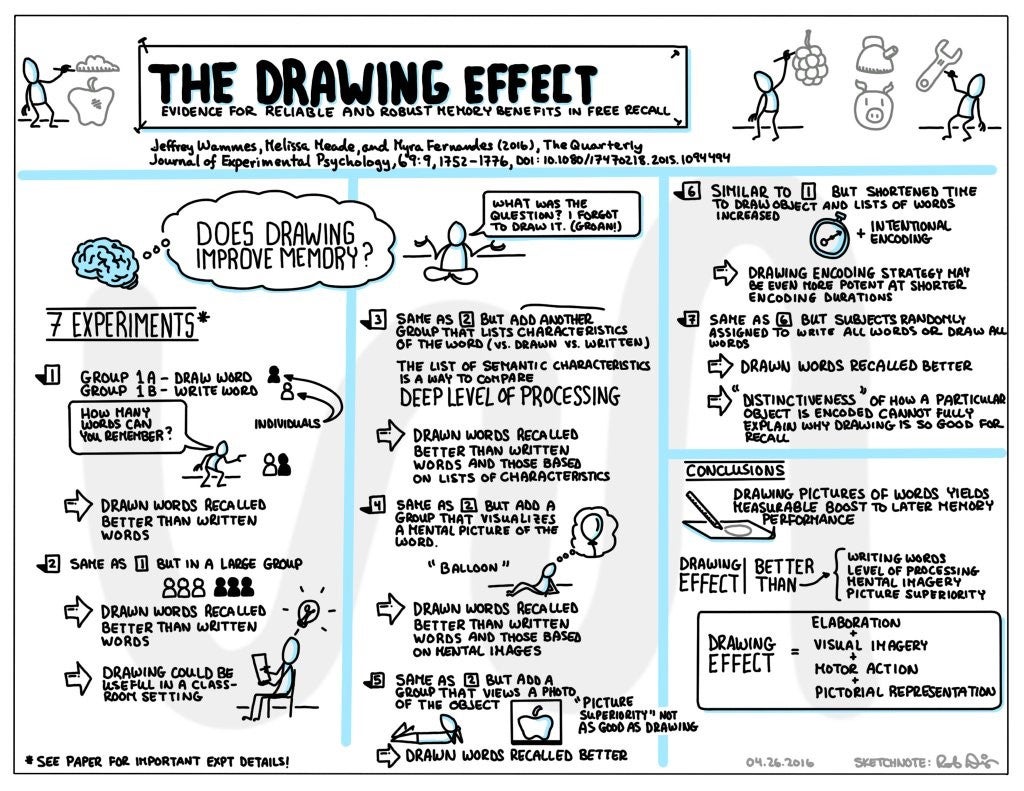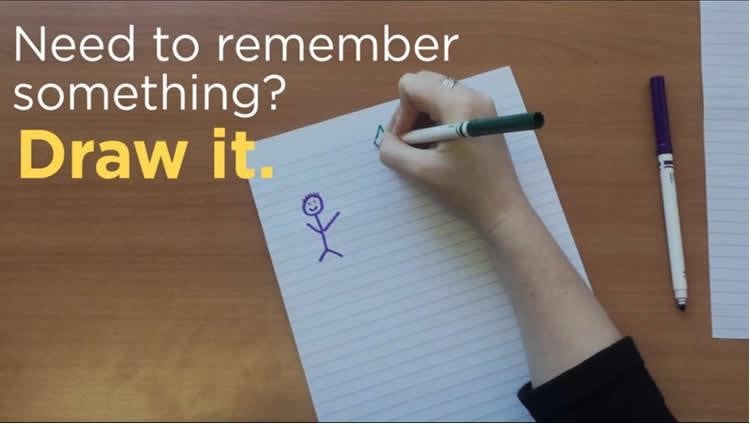
Do you spend hours studying for a test only to draw a blank when you see the questions? It turns out you are not the only one. For though the human brain may be more powerful than a computer, recalling information is a problem experienced by even the most prepared of students. The lapse in memory can be attributed to various factors, including fatigue, distraction, and nerves.
Past studies have indicated that saying words aloud could be beneficial to enhancing memory. However, this often isn’t practical in a classroom environment or a study group. Now, researchers from the University of Waterloo have come up with a new idea. They suggest drawing a picture of what you are trying to memorize!
The idea of dual-coding, the process of simultaneously thinking of a word and drawing it to remember it better, was first suggested in the 1970’s. While the research appeared to indicate that it worked, the studies were sparse and somewhat flawed. That’s because the researchers had not accounted for variables — Like testing to see if drawings were more memorable simply because they took longer to create, or if slower and more elaborate penmanship like calligraphy was as effective for memorization.

Jeffrey Wammes, a Ph.D. candidate at University of Waterloo’s Department of Psychology, recently decided to settle the issue once and for all with a new, more extensive study. He and his colleagues, Ph.D. candidate Melissa Meade and Professor Myra Fernandes, began by assigning a group of students a list of easy to draw words such as “apple” or “balloon.” After calling out each word, the researchers would give the students forty seconds, to either write it repeatedly or sketch a picture.
Once the task was complete, the scientists tried to distract and challenge the students’ memories by giving them an unrelated filler task: concentrating on classifying musical tones by pitch. After that had been completed, the researchers gave the students 60 seconds to write down as many words as they could recall from the first assignment. Sure enough, those that had used drawing as their memorization tool, did a much better job of remembering the words than those that had written them multiple times.
To ensure the results were not a coincidence, the researchers conducted several variations of the test. The students were asked to sketch words multiple times, embellish written words by shading or doodling them, and even list physical descriptions of each word. The results were always the same — the students that excelled were the ones that had drawn the image!

Not an artist? No worries! The researchers say the quality of the drawing played no role in the recollection. According to Wammes, the students’ memories improved even when they were given just a few seconds to sketch a picture.
Wammes and his colleagues, who published their findings in The Quarterly Journal of Experimental Psychology in April 2016, now plan to take this research further by investigating why drawing helps memorization. While there is much more to discover, the next time you are having a hard time learning a concept, draw it!